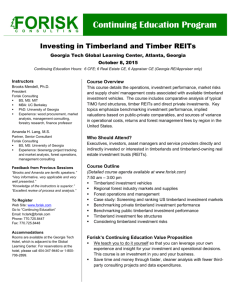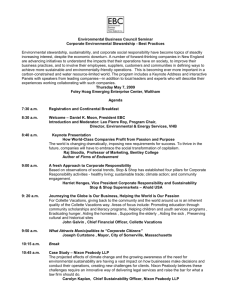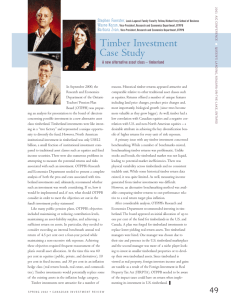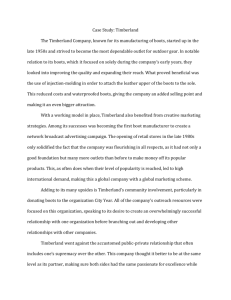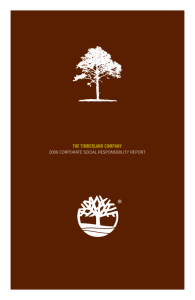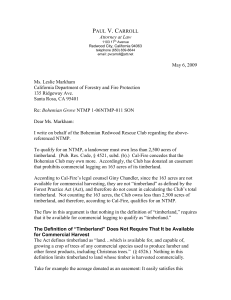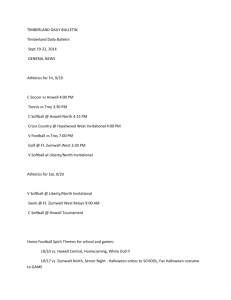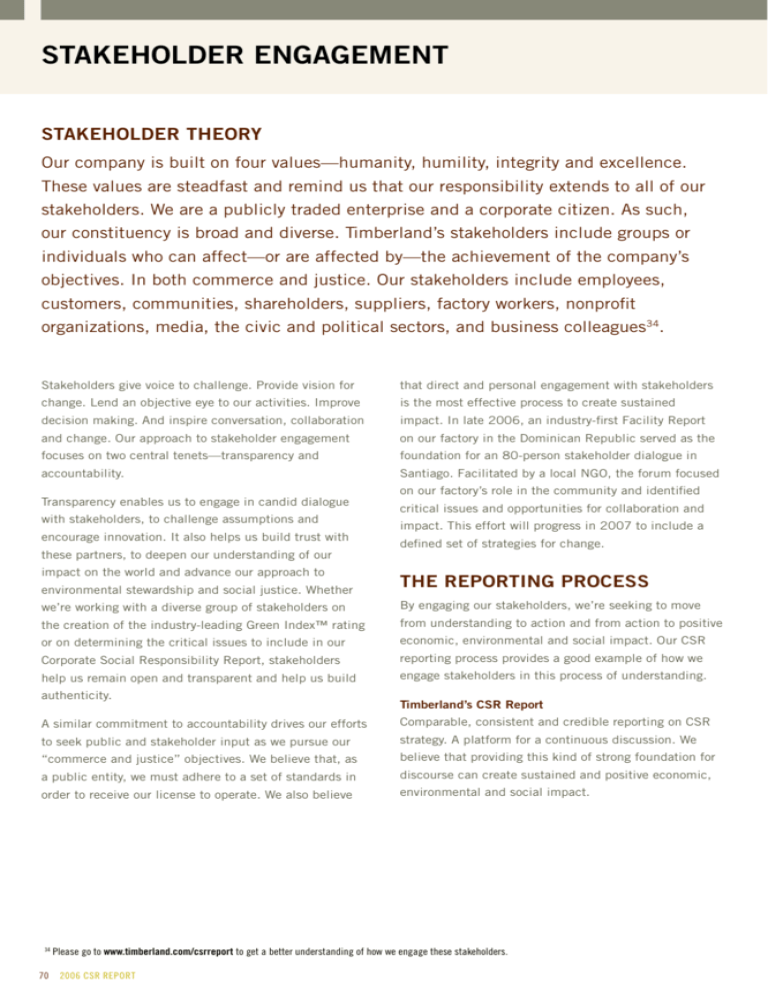
Stakeholder Engagement
Stakeholder Theory
Our company is built on four values—humanity, humility, integrity and excellence.
These values are steadfast and remind us that our responsibility extends to all of our
stakeholders. We are a publicly traded enterprise and a corporate citizen. As such,
our constituency is broad and diverse. Timberland’s stakeholders include groups or
individuals who can affect—or are affected by—the achievement of the company’s
objectives. In both commerce and justice. Our stakeholders include employees,
customers, communities, shareholders, suppliers, factory workers, nonprofit
organizations, media, the civic and political sectors, and business colleagues34.
Stakeholders give voice to challenge. Provide vision for
that direct and personal engagement with stakeholders
change. Lend an objective eye to our activities. Improve
is the most effective process to create sustained
decision making. And inspire conversation, collaboration
impact. In late 2006, an industry-first Facility Report
and change. Our approach to stakeholder engagement
on our factory in the Dominican Republic served as the
focuses on two central tenets—transparency and
foundation for an 80-person stakeholder dialogue in
accountability.
Santiago. Facilitated by a local NGO, the forum focused
Transparency enables us to engage in candid dialogue
with stakeholders, to challenge assumptions and
encourage innovation. It also helps us build trust with
these partners, to deepen our understanding of our
impact on the world and advance our approach to
on our factory’s role in the community and identified
critical issues and opportunities for collaboration and
impact. This effort will progress in 2007 to include a
defined set of strategies for change.
environmental stewardship and social justice. Whether
The Reporting Process
we’re working with a diverse group of stakeholders on
By engaging our stakeholders, we’re seeking to move
the creation of the industry-leading Green Index™ rating
from understanding to action and from action to positive
or on determining the critical issues to include in our
economic, environmental and social impact. Our CSR
Corporate Social Responsibility Report, stakeholders
reporting process provides a good example of how we
help us remain open and transparent and help us build
engage stakeholders in this process of understanding.
authenticity.
Timberland’s CSR Report
A similar commitment to accountability drives our efforts
Comparable, consistent and credible reporting on CSR
to seek public and stakeholder input as we pursue our
strategy. A platform for a continuous discussion. We
“commerce and justice” objectives. We believe that, as
believe that providing this kind of strong foundation for
a public entity, we must adhere to a set of standards in
discourse can create sustained and positive economic,
order to receive our license to operate. We also believe
environmental and social impact.
Please go to www.timberland.com/csrreport to get a better understanding of how we engage these stakeholders.
34
70
2006 CSR report
One way that Timberland seeks to stimulate this debate
has provided input on the development of our Green
is through our annual Corporate Social Responsibility
Index™ rating system. It has also helped us select the
report, which summarizes our work in sustainability for
content and review the strategies for both our CSR report
the previous calendar year. This document details and
and RFC Facility Report.
assesses our environmental and social footprint in the
communities where our company operates. It also strives
to be transparent and unflinching in its assessment
of our work.
Timberland engaged with Ceres and a team of external
stakeholders to review this year’s (2006) sustainability
report. The Ceres stakeholder team is an independent
group of individuals drawn primarily from the Ceres
By openly sharing both information and intent on issues
coalition and represents a range of constituencies that
material to our industry, we seek to encourage questions
have expertise in environmental, social and governance
and challenges from people and organizations on all
issues. In reviewing this report, the team considered
sides of the issues we address—and ultimately find
whether the company adequately reported on its
innovative solutions. One prominent example of how
sustainability performance and key impacts, including
our stakeholders are challenging Timberland and the
goals, targets, systems, data and initiatives.
industry on important issues can be found in the
“Voices of Challenge” (VOC) sections in our 2005
and 2006 reports.
Through the review process, the Ceres stakeholder team
provided extensive feedback to the company, which was
considered in the preparation of the final version of this
Ceres Stakeholder Reviews
report. Examples include helping us define “critical
Through our relationship with Ceres, we regularly
issues” for the VOC 2.0 section, focusing our discussion
convene a diverse set of stakeholders to review our work
of assessment results and presenting a balanced view of
in sustainability—and provide guidance on how we
our work. We look forward to continuing our relationship
can improve. This stakeholder team currently includes
with this group as we work to be more responsible and
investors, labor rights activists, supply chain experts,
accountable corporate citizens.
environmental NGOs, consumer advocates, community
partners and a member of our supply chain. This group
2006 CSR report
71
REPORT SCOPE
Our last report was published in July 2006 and covered Timberland’s global Corporate Social
Responsibility (CSR) activities in 2005. This annual report covers these actions for the calendar year
2006. Most of the data included is from that year, with the notable exception of our factory list, which
catalogs our active factories as of May 1, 2007. Instances when we report only on US-based activities are
clearly indicated.
The Basis of this Report
This report was developed based on the G3 and Apparel and Footwear Sector Supplement (AFSS). While
we attempted to create a comprehensive report, there are some G3 and AWSS indicators not included
in this report. There are several reasons for these omissions. Our impact may have been immaterial, or
we might have lacked enough internal data to provide a report. In the future, our goal is to narrow that
gap as we continue to report on social and environmental impacts that are both relevant and strategically
important.
How this Report Was Verified
Every data point in this report was verified internally, as was the way it was characterized. We are
continuing to explore the viability of an external verification program. After all, such programs enhance the
credibility of our CSR reports and make them easier to audit. We hope to receive guidance on this issue
during conversations with our stakeholders.
If you have any questions about this report, please direct them to:
Alex Hausman
CSR Reporting Manager
ahausman@timberland.com
(603) 772-9500 ext. 2281
A collection of images from our 2006 sales meeting in New Orleans
Standard Disclosures
G3 Index
GRI Indicator
Indicator Description
Sectionpageexplanation
1. Strategy and Analysis
1.1
Statement from the most senior decision-maker of the organization
(e.g., CEO, chair, or equivalent senior position) about the relevance of
sustainability to the organization and its strategy.
CEO Letter
5
1.2
Description of key impacts, risks, and opportunities.
The Timberland Footprint, Summary of
CSR Indicators
6-8
2. Organizational Profile
2.1
Name of the organization.
Front Cover
1
2.2
Primary brands, products, and/or services.
10-K/A
–
http://www.timberland.com/investorRelations/index.jsp
2.3
Operational structure of the organization, including main divisions,
operating companies, subsidiaries, and joint ventures.
10-K/A
–
http://www.timberland.com/investorRelations/index.jsp
2.4
Location of organization’s headquarters.
Last page
2.5
Number of countries where the organization operates, and names of
countries with either major operations or that are specifically relevant to the
sustainability issues covered in the report.
Economic Indicator, Timberland’s Influence
in the Supply Chain
10,
18-21
2.6
Nature of ownership and legal form.
10-K/A
–
http://www.timberland.com/investorRelations/index.jsp
2.7
Markets served (including geographic breakdown, sectors served, and types
of customers/beneficiaries).
10-K/A
–
http://www.timberland.com/investorRelations/index.jsp
2.8
Scale of the reporting organization.
The Organization, 10-k
9-15
http://www.timberland.com/investorRelations/index.jsp
2.9
Significant changes during the reporting period regarding size, structure,
or ownership.
Expansion, Factory Growth, 10-k
11,
19-20
http://www.timberland.com/investorRelations/index.jsp
2.10
Awards received in the reporting period.
2006 Awards
9
3. Report Parameters
Report Profile
3.1
Reporting period (e.g., fiscal/calendar year) for information provided.
Report Scope
72
3.2
Date of most recent previous report (if any).
Report Scope
72
3.3
Reporting cycle (annual, biennial, etc.)
Report Scope
72
3.4
Contact point for questions regarding the report or its contents.
Report Scope
72
Report Scope and Boundary
3.5
Process for defining report content.
Critical Issues, Stakeholder Engagement
7,
70-71
3.6
Boundary of the report
Report Scope, Timberland’s Influence in
the Supply Chain
72,
18-21
3.7
State any specific limitations on the scope or boundary of the report.
Timberland’s Influence in the Supply Chain
18-21
3.8
Basis for reporting on joint ventures, subsidiaries, leased facilities,
outsourced operations, and other entities that can significantly affect
comparability from period to period and/or between organizations.
Timberland’s Influence in the Supply Chain
18-21
3.9
Data measurement techniques and the bases of calculations, including
assumptions and techniques underlying estimations applied to the
compilation of the Indicators and other information in the report.
Throughout the report
–
3.10
Explanation of the effect of any re-statements of information provided
in earlier reports, and the reasons for such re-statement (e.g.,
mergers/acquisitions, change of base years/periods, nature of business,
measurement methods).
Financial Performance, Energy,
Community Investments
9, 39,
63
3.11
Significant changes from previous reporting periods in the scope, boundary,
or measurement methods applied in the report.
Not material
–
Table identifying the location of the Standard Disclosures in the report.
Standard Disclosures
78
Policy and current practice with regard to seeking external assurance for
the report.
Report Scope
72
Our intent is to provide global information. We specifically
notate instances in which the scope is altered.
We did our best to explain the data measurement
techniques and bases of calculations for the indicators
found throughout the report.
We added Smartwool facilities and employees when
reporting on global statistics.
GRI Content Index
3.12
Assurance
3.13
4. Governance, Commitments and Engagement
Governance
78
4.1
Governance structure of the organization, including committees under the
highest governance body responsible for specific tasks, such as setting
strategy or organizational oversight.
Our Approach, Governance
6,
12-13
4.2
Indicate whether the Chair of the highest governance body is also an
executive officer
Timberland Web site
–
2006 CSR report
http://phx.corporate-ir.net/phoenix.
zhtml?c=105954&p=irol-govhighlights
GRI Indicator
Indicator Description
Sectionpageexplanation
4.3
For organizations that have a unitary board structure, state the number
of members of the highest governance body that are independent and/or
non-executive members.
Timberland Web site
–
http://phx.corporate-ir.net/phoenix.
zhtml?c=105954&p=irol-govhighlights
4.4
Mechanisms for shareholders and employees to provide recommendations or
direction to the highest governance body.
10-k
–
http://www.timberland.com/investorRelations/index.jsp
4.5
Linkage between compensation for members of the highest governance
body, senior managers, and executives (including departure arrangements),
and the organization’s performance (including social and environmental
performance).
10-k
–
http://www.timberland.com/investorRelations/index.jsp
4.6
Processes in place for the highest governance body to ensure conflicts of
interest are avoided.
Timberland Web site
–
http://phx.corporate-ir.net/phoenix.
zhtml?c=105954&p=irol-govhighlights
4.7
Process for determining the qualifications and expertise of the members
of the highest governance body for guiding the organization’s strategy on
economic, environmental, and social topics.
Timberland Web site
–
http://phx.corporate-ir.net/phoenix.
zhtml?c=105954&p=irol-govhighlights
4.8
Internally developed statements of mission or values, codes of conduct, and
principles relevant to economic, environmental, and social performance and
the status of their implementation.
Framework for Commerce and Justice
6
Our Code of Ethics and Code of Conduct can be found
at www.timberland.com/csrreport
4.9
Procedures of the highest governance body for overseeing the organization’s
identification and management of economic, environmental, and social
performance, including relevant risks and opportunities, and adherence or
compliance with internationally agreed standards, codes of conduct, and
principles.
Governance
12-13
Also see: http://phx.corporate-ir.net/phoenix.
zhtml?c=105954&p=irol-govhighlights
4.10
Processes for evaluating the highest governance body’s own performance,
particularly with respect to economic, environmental, and social
performance.
Timberland Web site
–
http://phx.corporate-ir.net/phoenix.
zhtml?c=105954&p=irol-govhighlights
Commitments to External Initiatives
4.11
Explanation of whether and how the precautionary approach or principle is
addressed by the organization.
Throughout the report
–
Our approach to risk management as it relates to
economic, social and environmental issues is woven
throughout this report.
4.12
Externally developed economic, environmental, and social charters,
principles, or other initiatives to which the organization subscribes or
endorses.
Timberland Web site
–
Our updated Web site will include information about the
external charters/principles we endorse. More at www.
timberland.com.
4.13
Memberships in associations (such as industry associations) and/or
national/international advocacy organizations in which the organization:
Public Policy
12-13
The section on Public Policy includes an incomplete list of
our industry association partnerships. We aim to include
a more comprehensive list in next year’s CSR report.
Stakeholder Engagement
4.14
List of stakeholder groups engaged by the organization.
Stakeholder Engagement
70-71
4.15
Basis for identification and selection of stakeholders with whom to engage.
Stakeholder Engagement
70-71
4.16
Approaches to stakeholder engagement, including frequency of engagement
by type and by stakeholder group.
Stakeholder Engagement
70-71
4.17
Key topics and concerns that have been raised through stakeholder
engagement, and how the organization has responded to those key topics
and concerns, including through its reporting.
Stakeholder Engagement
70-71
5. Economic Performance Indicators
Economic Performance
EC1
Direct economic value generated and distributed
Not reported
–
EC2
Financial implications and other risks and opportunities for the
organization’s activities due to climate change
Confirming Our Committment to the
Outdoors, Energy
35-37,
38-40
EC3
Coverage of the organization’s defined benefit plan obligations
Timberland Web site
–
http://www.timberland.com/corp/index.
jsp?page=working Here
EC4
Significant financial assistance received from the government
Not Material
–
http://www.timberland.com/investorRelations/index.jsp
We have not publicly disclosed employee wage
information in this manner. We hope this is something
we can report on in the 2007 report.
Market Presence
EC5
Range of ratios of standard entry level wage compared to local minimum
wage at significant locations of operation
Economic Indicators
10
EC6
Policy, practice and proportion of spending on locally-based suppliers at
significant locations of operation
Not reported
–
We have implemented SAP for our accounting services.
This will help us gather this information for future
reports.
EC7
Procedures for local hiring and proportion of senior management hired from
the local community at significant locations of operation
Economic Indicators
10
Timberland is always looking to hire from the local
community. In the report, we provide a ratio of senior
management that is from the local area.
Facility Report
–
Information about infrastructure investments for our
Dominican Republic factory can be found at www.
timberland.com/csrreport.
Indirect Economic Impacts
EC8
Development and impact of infrastructure investments and services
provided primarily for public benefit through commercial, in-kind
or pro-bono engagement
2006 CSR report
79
GRI Indicator
EC9
Indicator Description
Understanding and describing significant indirect economic impacts,
including the extent of impacts
Sectionpageexplanation
Not reported
–
We have not tracked our indirect economic impacts in a
comprehensive manner. We are working to gain a better
understanding of these types of impacts.
6. Environmental Performance Indicators
Materials
EN1
Materials used by weight or volume.
Not reported
–
We are not tracking this information at the aggregate
level. We are working on a reporting infrastructure that
will help us gather this type of information. No date is
yet set to report publicly on this.
EN2
Percentage of materials used that are recycled input materials.
Eco-Effective Design
45
This chart provides are incomplete view of recycled
input material. We plan to expand this reporting
next year.
EN3
Direct energy consumption by primary energy source.
Greenhouse Gas Inventory
38-39
EN4
Indirect energy consumption by primary source.
Greenhouse Gas Inventory
38-39
EN5
Energy saved due to conservation and efficiency improvements.
Efficiency Measures
40
EN6
Initiatives to provide energy-efficient or renewable energy-based products
and services, and reductions in energy requirements as a result of these
initiatives.
Efficiency Measures
40
EN7
Initiatives to reduce indirect energy consumption and reductions achieved.
Efficiency Measures
40
EN8
Total water withdrawal by source.
Facility Report
–
EN9
Water sources significantly affected by withdrawal of water.
Not material
–
EN10
Percentage and total volume of water recycled and reused.
Facility Report
–
EN11
Location and size of land owned, leased, managed in, or adjacent to,
protected areas and areas of high biodiversity value outside protected areas.
Not material
–
EN12
Description of significant impacts of activities, products, and services on
biodiversity in protected areas and areas of high biodiversity value outside
protected areas.
Not material
–
EN13
Habitats protected or restored.
Not material
–
EN14
Strategies, current actions, and future plans for managing impacts on
biodiversity.
Not material
–
EN15
Number of IUCN Red List species and national conservation list species with
habitats in areas affected by operations, by level of extinction risk.
Not material
–
Energy
Water
Go to www.timberland.com/csrreport to find
information about water withdrawal by the Recreational
Footwear Company
Go to www.timberland.com/csrreport to find
information about water withdrawal by the Recreational
Footwear Company
Biodiversity
Emissions, Effluents and Waste
EN16
Total direct and indirect greenhouse gas emissions by weight.
Greenhouse Gas Inventory
38-39
EN17
Other relevant indirect greenhouse gas emissions by weight.
Greenhouse Gas Inventory
38-39
EN18
Initiatives to reduce greenhouse gas emissions and reductions achieved.
Energy
40
EN19
Emissions of ozone-depleting substances by weight.
Not material
–
We are not tracking this information at the aggregate
level. We are working on a reporting infrastructure that
will help us gather this type of information. No date is
yet set to report publicly on this.
EN20
NOx, SOx, and other significant air emissions by type and weight.
Appendix
73-77
We report on this data for the Recreational Footwear
Company
EN21
Total water discharge by quality and destination.
Not material
–
We are not tracking this information at the aggregate
level. We are working on a reporting infrastructure that
will help us gather this type of information. No date is
yet set to report publicly on this.
7. Labor Practices and Decent Work
Employment
LA1
Total workforce by employment type, employment contract, and region.
People
14-15
This section provides much of the required information.
LA2
Total number and rate of employee turnover by age group, gender, and
region.
People
14-15
This section provides much of the required information.
LA3
Benefits provided to full-time employees that are not provided to temporary
or part-time employees, by major operations.
Timberland Web site
–
Benefits can be found at http://www.timberland.
com/corp/index.jsp?page=workingHere_benefits
Not material
–
No Timberland employees are covered by collective
bargaining agreements.
Labor/Management Relations
LA4
80
Percentage of employees covered by collective bargaining agreements.
2006 CSR report
GRI Indicator
LA5
Indicator Description
Minimum notice period(s) regarding significant operational changes,
including whether it is specified in collective agreements.
Sectionpageexplanation
Not material
–
No Timberland employees are covered by collective
bargaining agreements.
Our Health and Safety section discusses our work in
this area. Our safety committees are very small but
their work affects the broad employee population.
Occupational Health and Safety
LA6
Percentage of total workforce represented in formal joint managementworker health and safety committees that help monitor and advise on
occupational health and safety programs.
Not material
–
LA7
Rates of injury, occupational diseases, lost days, and absenteeism, and
total number of work-related fatalities by region.
Health and Safety
15
LA8
Education, training, counseling, prevention, and risk-control programs in
place to assist workforce members, their families, or community members
regarding serious diseases.
Not reported
–
While we include disease awareness into our worker
training, we do not track them formally.
LA9
Health and safety topics covered in formal agreements with trade unions.
Not material
–
No Timberland employees are covered by collective
bargaining agreements.
Training and Education
–
LA10
Average hours of training per year per employee by employee category.
Not reported
LA11
Programs for skills management and lifelong learning that support the
continued employability of employees and assist them in managing career
endings.
An Education Program Grows in the
Dominican Republic, Field Assignment
in Kenya
30, 65
LA12
Percentage of employees receiving regular performance and career
development reviews.
Not reported
–
We plan to report on this data in the 2007 report.
We plan to report on this data in the 2007 report.
Diversity and Equal Opportunity
Additional information can be found at http://phx.
corporate-ir.net/phoenix.zhtml?c=105954&p=irolgovhighlights
LA13
Composition of governance bodies and breakdown of employees per category
according to gender, age group, minority group membership, and other
indicators of diversity.
People
14-15
LA14
Ratio of basic salary of men to women by employee category.
Not reported
–
We have not tracked this information in the past. This is
something we would like to include in next year’s report.
The Global Human Rights section of the report
discusses how many factories have received a human
rights screening.
8. Human Rights
Investment and Procurement Practices
HR1
Percentage and total number of significant investment agreements that
include human rights clauses or that have undergone human rights
screening.
Global Human Rights
16-31
HR2
Percentage of significant suppliers and contractors that have undergone
screening on human rights and actions taken.
Factory Growth, The Code We Live By
19-20,
21
HR3
Total hours of employee training on policies and procedures concerning
aspects of human rights that are relevant to operations, including the
percentage of employees trained.
Not reported
–
While we train our employees on human rights, we do
not track this indicator in the aggregate.
Non-discrimination
HR4
Total number of incidents of discrimination and actions taken.
Not reported
–
We plan to report on this data in the 2007 report.
Freedom of Association and Collective Bargaining
HR5
Operations identified in which the right to exercise freedom of association
and collective bargaining may be at significant risk, and actions taken to
support these rights.
Global Human Rights
16-31
Operations identified as having significant risk for incidents of child labor,
and measures taken to contribute to the elimination of child labor.
Global Human Rights
16-31
Global Human Rights
16-31
Child Labor
HR6
Forced and Compulsory Labor
HR7
Operations identified as having significant risk for incidents of forced or
compulsory labor, and measures taken to contribute to the elimination of
forced or compulsory labor.
Security Practices
HR8
Percentage of security personnel trained in the organization’s policies
or procedures concerning aspects of human rights that are relevant to
operations.
Not material
–
Indigenous Rights
HR9
Total number of incidents of violations involving rights of indigenous people
and actions taken.
Not material
–
9. Product Responsibility
Customer Health and Safety
PR1
Life cycle stages in which health and safety impacts of products and
services are assessed for improvement, and percentage of significant
products and services categories subject to such procedures.
Green Index, Eco-Effective Product
Design
37,
45-48
PR2
Total number of incidents of non-compliance with regulations and voluntary
codes concerning health and safety impacts of products and services, by
type of outcomes.
Not material
–
We have not identified any non-compliance with
regulations and voluntary codes
2006 CSR report
81
GRI Indicator
Indicator Description
Sectionpageexplanation
Product and Service Labeling
PR3
Type of product and service information required by procedures, and
percentage of significant products and services subject to such information
requirements.
Green Index, Eco-Effective Product
Design
37,
45-48
PR4
Total number of incidents of non-compliance with regulations and voluntary
codes concerning product and service information and labeling, by type
of outcomes.
Not material
–
We have not identified any non-compliance with
regulations and voluntary codes
PR5
Practices related to customer satisfaction, including results of surveys
measuring customer satisfaction.
Not reported
–
We have not reported on our customer satisfaction
research in past CSR reports. We are not sure if we will
include this data in future CSR reports.
Marketing Communications
–
PR6
Programs for adherence to laws, standards, and voluntary codes related
to marketing communications, including advertising, promotion, and
sponsorship.
Not material
PR7
Total number of incidents of non-compliance with regulations and voluntary
codes concerning marketing communications, including advertising,
promotion, and sponsorship, by type of outcomes.
Not material
–
Total number of substantiated complaints regarding breaches of customer
privacy and losses of customer data.
Not material
–
Monetary value of significant fines for non-compliance with laws and
regulations concerning the provision and use of products and services
Not material
–
Nature, scope, and effectiveness of any programs and practices that assess
and manage the impacts of operations on communities, including entering,
operating, and exiting.
A Promise in Asia, Appendix
64,
73-74
SO2
Percentage and total number of business units analyzed for risks related
to corruption.
Not material
–
More information can be found in our Code of
Ethics: http://www.corporate-ir.net/ireye/ir_site.
zhtml?ticker=TBL&script=2250
SO3
Percentage of employees trained in organization’s anti-corruption policies
and procedures.
Not material
–
More information can be found in our Code of
Ethics: http://www.corporate-ir.net/ireye/ir_site.
zhtml?ticker=TBL&script=2251
SO4
Actions taken in response to incidents of corruption.
Not material
–
More information can be found in our Code of
Ethics: http://www.corporate-ir.net/ireye/ir_site.
zhtml?ticker=TBL&script=2252
SO5
Public policy positions and participation in public policy development and
lobbying.
Public Policy
12-13
SO6
Total value of financial and in-kind contributions to political parties,
politicians, and related institutions by country.
Public Policy
12-13
Total number of legal actions for anti-competitive behavior, anti-trust, and
monopoly practices and their outcomes.
Not material
–
More information can be found in our Code of
Ethics: http://www.corporate-ir.net/ireye/ir_site.
zhtml?ticker=TBL&script=2250
Monetary value of significant fines and total number of non-monetary
sanctions for non-compliance with laws and regulations.
Not material
–
More information can be found in our Code of
Ethics: http://www.corporate-ir.net/ireye/ir_site.
zhtml?ticker=TBL&script=2250
We have not identified incidents of non-compliance
with regulations.
Customer Privacy
PR8
We have not identified any substantiated complaints.
Compliance
PR9
We did not have significant fines for non-compliance.
10. Society
Community
SO1
Corruption
Public Policy
Anti-Competitive Behavior
SO7
Compliance
SO8
82
2006 CSR report
Apparel and Footwear Sector Supplement (Draft version)
AF
Indicator
Indicator Description
Sectionpageexplanation
Commentary
on 1.2
Where applicable, this should include an assessment of supply
chain performance.
Global Human Rights
16-31
We describe our key impacts, risks and opportunities
throughout the Global Human Rights section.
AF1
Code of conduct content and coverage.
Timberland’s Influence in the Supply Chain
18
For more information, our Code of Conduct can be found
at http://www.timberland.com/corp/english_feb02.pdf
AF2
Parties and personnel engaged in code of conduct compliance function.
Our Approach, Factory Growth
6, 19
AF3
Compliance audit process.
The Assessment
22-29
More information about our assessment process can be
found at www.timberland.com/csrreport.
AF4
Policy and procedures for receiving, investigating, and responding to
grievances and complaints.
Timberland Web Site
–
Information about policy and procedures relating to
grievances and complaints can be found in our Code
of Ethics online: http://phx.corporate-ir.net/phoenix.
zhtml?c=105954&p=irol-govConduct
AF5
Strategy and scope of efforts to strengthen capacity of management,
workers and other staff to improve in social and environmental performance.
The Assessment, Beyond Monitoring
22-29,
29-30
AF6
Policies for supplier selection, management, and termination.
Taking Responsibility Within Our
Supply Chain
17-21
AF7
Number and location of workplaces covered by code of conduct.
Taking Responsibility Within Our
Supply Chain
17-21
AF8
Number of audits conducted and percentage of workplaces audited.
Taking Responsibility Within Our
Supply Chain
17-21
AF9
Incidents of non-compliance with legal requirements or collective
bargaining agreements on wages.
We will report on this information as part of our
disclosure under indicator AF14.
AF10
Incidents of non-compliance with overtime standards.
We will report on this information as part of our
disclosure under indicator AF14.
AF11
Incidents of non-compliance with standards on pregnancy
and maternity rights.
We will report on this information as part of our
disclosure under indicator AF14.
AF12
Incidents of the use of child labor.
We will report on this information as part of our
disclosure under indicator AF14.
AF13
Incidents of noncompliance with standards on gender discrimination.
We will report on this information as part of our
disclosure under indicator AF14.
AF14
Incidents of non-compliance with code of conduct.
Assessment Results
22-24
AF15
Analysis of data from code compliance audits.
Assessment Results
22-24
AF16
Remediation practices to address non-compliance findings.
Assessment Results
22-24
AF17
Actions to identify and mitigate business practices that affect code
compliance.
Taking Responsibility Within Our
Supply Chain
17-21
AF18
Programs to replace organic-based adhesives and primers with water-based
adhesives and primers.
Chemical Management
41-42
AF19
Practices to source safer alternative substances to those on the restricted
substances list, including description of associated management systems.
Chemical Management
41-42
Commentary
on EN1
Include use of pumice, stones and sand under Compilation 2.1 on
“Associated process materials.” Report on pumice, stones, and sand by
weight under Compilation 2.3
Not reported
–
AF20
List of environmentally preferable materials used in apparel and footwear
products.
Resources
43-48
AF21
Amount of energy consumed and percentage of the energy that is from
renewable sources.
Energy
38-40
Commentary
on EN21
For Footwear: Report on total chromium discharges under Compilation
2.3. For Apparel: Report on the discharge of antimony, arsenic, cadmium,
chromium, cobalt, copper, cyanide, lead, mercury, nickel, and zinc under
Compilation 2.3.
Not reported
–
We do not yet have the systems in place to track this
data. We are working within our supply chain to gain a
better understanding of these discharges.
Commentary
on EN22
Report on pumice, stones and sand under Compilation 2.1.
Not reported
–
We do not yet have the systems in place to track this
data. We are working within our supply chain to gain a
better understanding of these resources.
Commentary
on EN26
In addition to Compilation 2.2, report on specific programs to reduce
environmental impact of products, including but not limited to
manufacturing, product use, and packaging use at the design and
conceptualization stages.
Eco-Effective Design
45-48
AF22
Policy and practices regarding the use of employees with nonpermanent and
non-fulltime status.
Not reported
–
This issue is covered in Timberland’s Workplace Quality
Standards Guide. To request a copy of this document,
please email csrinfo@timberland.com.
AF23
Policy regarding the use of home working.
Not reported
–
This issue is covered in Timberland’s Workplace Quality
Standards Guide. To request a copy of this document,
please email csrinfo@timberland.com.
For more information, our Code of Conduct can be found
at http://www.timberland.com/corp/english_feb02.pdf
More information can be found in the Make it Better
Brief on Working Hours
We do not yet have the systems in place to track this
data. We are working within our supply chain to gain a
better understanding of these discharges.
2006 CSR report
83
AF
Indicator
84
Indicator Description
Sectionpageexplanation
AF24
Policy on the use and selection of labor brokers, including adherence to
relevant ILO Conventions.
Not reported
–
This issue is covered in Timberland’s Workplace Quality
Standards Guide. To request a copy of this document,
please email csrinfo@timberland.com.
AF25
Policy and practices on wage deductions that are not mandated by law.
The Assessment
22-29
For more information, our Code of Conduct can be found
at http://www.timberland.com/corp/english_feb02.pdf
AF26
Policy on working hours, including definition of overtime, and actions to
prevent excessive and forced overtime.
The Assessment
22-29
For more information, our Code of Conduct can be found
at http://www.timberland.com/corp/english_feb02.pdf
AF27
Policy and actions to protect the pregnancy and maternity rights
of women workers.
The Assessment
22-29
For more information, our Code of Conduct can be found
at http://www.timberland.com/corp/english_feb02.pdf
AF28
Percentage of foreign migrant workers as a portion of total workforce, broken
down by region.
Not reported
–
We do not currently track this indicator. We are working
to gain deeper transparency into our supply chain. We
hope to report on this indicator in future reports.
AF29
Percentage of workplaces where there is one or more independent
trade union(s).
Not material
–
Timberland does not have independent trade unions.
AF30
Percentage of workplaces where, in the absence of a trade union, there are
worker-management committees, broken down by country.
Not reported
–
We do not currently track this indicator. We are working
to gain deeper transparency into our supply chain. We
hope to report on this indicator in future reports.
Commentary
on LA7
Include health issues associated with reduced lung function due to dust
in “Occupational disease rate” under Compilation 2.4. Include risk
assessments and preventative measures for accidents and injuries under
Compilation 2.7.
Not reported
–
We do not currently track this indicator. We are working
to gain deeper transparency into our supply chain. We
hope to report on this indicator in future reports.
AF31
Initiatives and programs to respond to, reduce, and prevent the occurrence
of musculoskeletal disorders.
Not reported
–
We do many trainings for our employees and factory
workers. At this point we do not have trainings
specifically on musculoskeletal disorders.
AF32
Actions to address gender discrimination and to provide opportunities for
the advancement of women workers.
Beyond Monitoring
29-30
More information can be found in the Global Human
Rights section of the 2005 CSR report.
AF33
Priorities in community investment strategy.
Beyond Monitoring, Investing in the
Community
29-30,
62-63
AF34
Amount of investment in worker communities broken down by location.
Appendix
73-75
Commentary
on SO5
Report public policy position on the inclusion of labor and environmental
protections in trade agreements and the degree to which lobbying
positions integrate considerations about the potential effects on workers,
communities, and organizations in the supply chain under Compilation 2.3
Public Policy
12-13
2006 CSR report
We provide data for our workforce in the Dominican
Republic. We do not have data for other locations in
our supply chain.
GRI Application Level
Not Required
Report on a minimum
of 10 Performance
Indicators, including at
least one from each of:
Economic, Social and
Environmental.
Output
Report on all criteria
listed for Level C plus:
1.2
3.9, 3.13
4.5-4.13, 4.16-4.17
Management Approach
Disclosures for each
Indicator Category
Report on a minimum
of 20 Performance
Indicators, at least one
from each of Economic,
Environmental, Human
rights, Labor, Society,
Product Responsibility.
B+
A
A+
Same as requirement
for Level B
Management Approach
Disclosures for each
Indicator Category
Report on each core G3
and Sector Supplement®
Indicator with due regard
to the Materiality Principle
by either: a) reporting
on the Indicator or b)
explaining the reason for
its omission.
Report Externally Assured
➜
Report on:
1.1
2.1-2.10
3.1-3.8, 3.10-3.12
4.1-4.4, 4.14-4.15
B
Report Externally Assured
G3 Performance
Indicators &
Sector Supplement
Performance
Indicators
➜
Output
G3 Management
Approach Disclosures
➜
Output
Standard Disclosures
G3 Profile Disclosures
C+
Report Externally Assured
C
Report Application Level
➜
The GRI Application
Level of Timberland’s
2006 CSR Report
➜ For more information the GRI and its reporting principles, please visit www.globalreporting.org.
➜ Want to learn more about Timberland’s activities in the area of corporate social responsibility?
Please log on to www.timberland.com.
➜ F
or information about this report, please contact Alex Hausman in Corporate Social Responsibility
at: ahausman@timberland.com.
➜ The Timberland Company
200 Domain Drive, Stratham, NH 03885
603-772-9500
csrinfo@timberland.com
Timberland, , Make it Better, Timberland Boot Company, Timberland PRO, Earthkeepers and Path of Service are trademarks of The Timberland
Company. GoLite, the GoLite logo and Green Index are trademarks of Timberland Switzerland GMBH. Howies and the Howies logo are trademarks
of Howies Limited. SmartWool and the SmartWool logo are trademarks of SmartWool Corporation. Vibram and EcoStep are trademarks of Vibram
S.p.A. All other trademarks or logos used in this copy are the property of their respective owners. ©2007 The Timberland Company.
All rights reserved. COR35133
2006 CSR report
85
What does it mean to “Make it better”?
Everyday we are inspired by the actions of other
organizations. Here are examples of how our
“Voices of Challenge” participants made a
difference in 2006.
State of Louisiana
Changing Louisiana through Volunteerism and
Social Entrepreneurship is an initiative that
promotes social entrepreneurship and citizen
service throughout Louisiana. The full-day
seminars bring together national leaders in
the social entrepreneurship field, local change
leaders and citizens who tackle a myriad of social
problems in their communities for dialogue,
critical thinking and networking. The Office
of Social Entrepreneurship, a first-of-its-kind
office in the United States, presents Changing
Louisiana. Lt. Governor Mitch Landrieu created
the office in Fall 2006.
Boston College Center for
Corporate citizenship
The Center’s executive education program is the
only one in North America offering professional
certificates in managing community involvement
and corporate citizenship. In 2006, 145
certificates were awarded to corporate managers.
Phillips–van heusen corporation
PVH believes in the strength of stakeholders’
efforts and is a founding member of the Fair
Labor Association (FLA). During 2006, they
focused on critical issues and conducted several
pilot programs with the FLA such a “workers’
committee” in China and the eradication of
discriminatory labor practices in Central America.
In addition, PVH rolled out an initiative to
develop “health and safety committees” at
factories in all of their regions.
Levi Strauss & Co
In 2006, Levi Strauss & Co. (LS&CO.), using a
global environmental engineering consultant,
tested wastewater effluent from 113 finishing
facilities and nine fabric mills to validate data
the facilities had been providing pursuant to the
requirements of the company’s Global Effluent
Guidelines (GEG) which apply to all LS&CO.
contract laundries. With 80 percent of laundries
registering compliance with 14 of the GEG’s
Backpacker
16 parameters, LS&CO. was encouraged by the
With its April 2007 issue, Backpacker switched
paper stocks from a 40-pound sheet to a 36pound high-bulk sheet. The change will reduce
annual paper consumption by approximately 10%.
results and is using the information to develop
training and tools for suppliers, and program
improvements to build supplier wastewater
management capability and ownership.
Ceres
GAP Inc.
Ceres organized 65 leading companies and
investors managing $4 trillion in assets to call on
the US Congress to adopt strong climate-change
legislation that includes a 60-90% greenhouse
gas reduction target from 1990 levels by 2050.
From 2005 to 2006, GAP experienced a 40%
increase in the number of approved garment
suppliers that earned their highest compliance
rating, which suggests that progress is being
made in the working conditions of many
factories in our supply chain.
SAI
More than 650,000 people in 60 countries
work at 1,200 factories, offices and farms
certified to SA8000.
Walden Asset Management,
a division of Boston Trust &
Investment Management Company
During 2006, Walden Asset Management
held constructive conversations with over
100 companies on a range of corporate social
responsibility issues. These private discussions,
sometimes combined with public shareholder
pressure, contributed to company decisions to
decrease emissions and waste, increase attention
to human rights and workplace equality,
and strengthen corporate transparency and
governance practices.
Pou Yen
As one of the overseas footwear factories of
Pou Chen international group, Pou Yen Vietnam
produces many famous footwear brands and
supplies their customers with high quality goods.
Deloitte & Touche USA LLP’s
A best practice example is Deloitte’s relationship
with College Summit, an organization that works to
increase college access for low-income students.
Deloitte is providing cash, board leadership,
volunteer writing coaches and an exciting pro bono
project that is designed to facilitate a performance
scorecard for high schools to measure and
report the rate at which their graduates enroll in
college—an important component to improving
enrollment rates nationwide.
Sustainable south bronx
SSBx has overseen the convergence of
Timberland’s volunteer and in-kind contributions
in the building of beautiful wooden tree guards
around vulnerable South Bronx street trees.
In addition, they have utilized Clinton Global
Initiative funds to pay living wages to local,
well-trained Greenway Stewards who maintain
and add benches around the trees—weaving
them into a culture of environmental care in
low-income urban areas. And guess whose boots
their stewards are wearing.
The Climate Group
The Climate Group has grown to 40 member
corporations and governments, whose members’
footprint consists of 8.6% Global CO2 Emissions
(discounting overlap) of 0.8% corporate (direct)
and 7.8% from government jurisdictions.
CREA: Center for Reflection,
Education and Action, Inc.
CREA has been part of the GRI since 2000 when
they began raising the questions: Sustainability
of whom? Sustainability of what? Rather than
stand outside the GRI and criticize, we have
worked within the GRI structure to bring about
change. As a member of the GRI Stakeholder
Council, as co-chair of the Apparel and Footwear
Sector Supplement Working Group, as a member
of the Core Measurement Working Group
for the 2002 Guidelines and of the Society
Working Group for the 2006 Guidelines, they
have continued to raise the same questions:
Sustainability of whom? Sustainability of what?
2006 CSR report
87
Printed using soy-based inks on 100% post-consumer recycled paper certified
by The Forest Stewardship Council (FSC) and produced with wind-generated energy.

